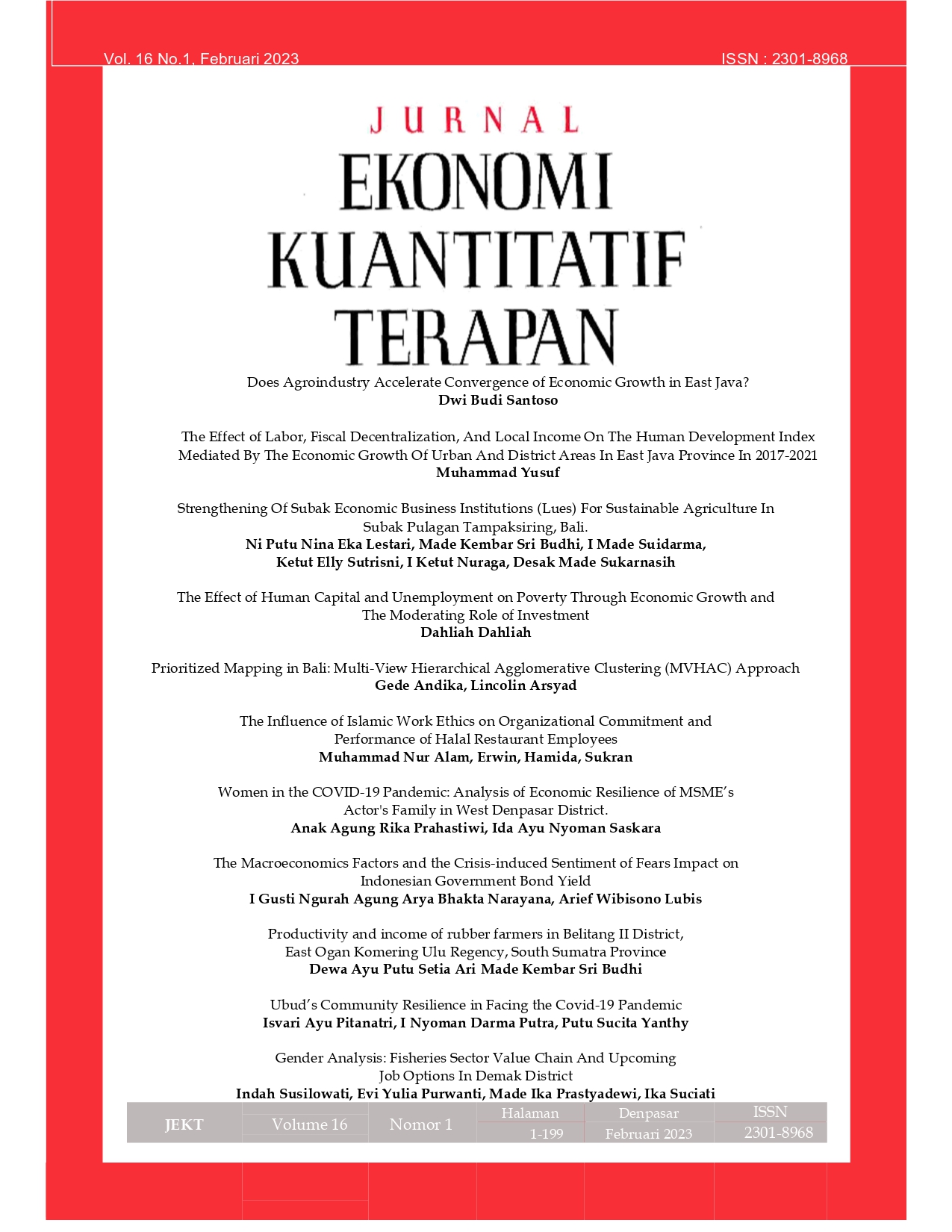STRENGTHENING OF SUBAK ECONOMIC BUSINESS INSTITUTIONS (LUES) FOR SUSTAINABLE AGRICULTURE IN SUBAK PULAGAN TAMPAKSIRING, BALI.
Abstract
Subak Pulagan was designated by UNESCO as a World Cultural Heritage (WBD) which is the location of a rice planting cluster with System of Rice Intensification (SRI) to strengthen Subak Economic Business Institution (LUES). This research is Action Research because includes two stages, research and action aspects regarding potential and assistance for LUES development efforts in the Pulagan Subak. Survey method through in-depth interviews and Participatory Rural Appraisal (PRA) through Focus Group Discussions. The research results are; (1) Inhibiting factors strengthening LUES for sustainable agriculture are: The management system still conservative, human resources have limited management skills, organizational nature is socioreligious, entrepreneurial spirit hasn’t maximally, low trust of funders (banks), competition and weak information of market; (2) LUES strengthening strategy for sustainable agriculture are: Subak requires legal entity status, business assistance from stakeholders, business management skills training, support from government and society, transformation and reconstruction of modern management as socio-agrarian-religious-economic




















